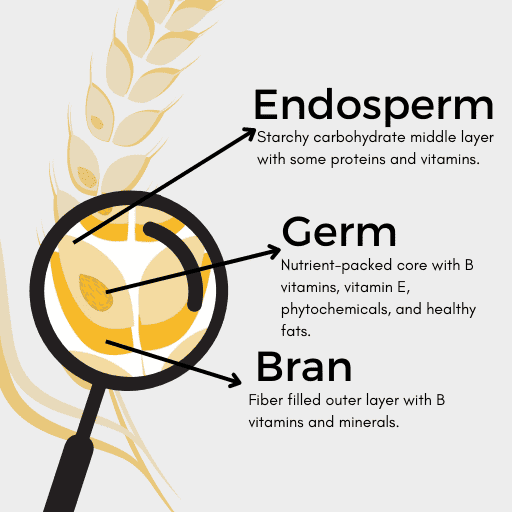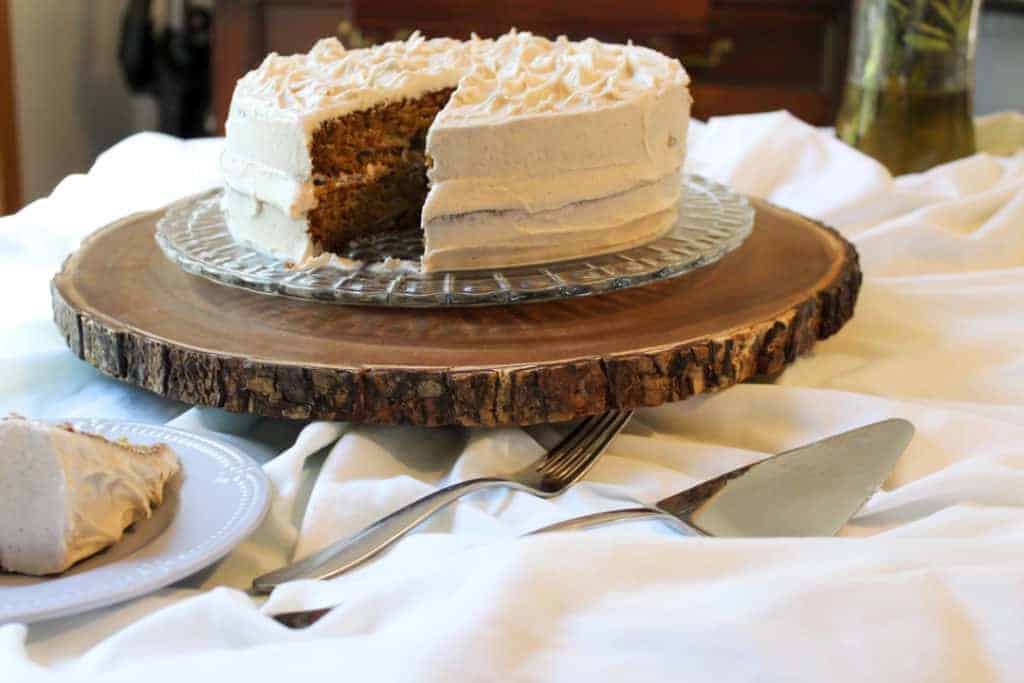A Perfect Gift at All Times
If you have decided to improve your health, one of countless surprising benefits of milling your grain is decreased inflammation in your gut, ear’s Eustachian tubes, joints, and brain. That is why I call my all my gut healthy blogs, gut to ear health.
The way grain is milled has changed drastically over the years. And while we could dive into a deep conversation about stone mills vs electric mills and the history of community grain mills, I will spare you the details. With the touch of a button, you can grind grain in the comfort of your home.
Why Do You Want to Mill Your Own Grain?
You can approach this question from many perspectives: sustainability, food security, health, nutrition, access to a larger variety of grains and flours, etc.
Milling grain puts control of your nutrition back into your own hands. You decide what you mill: gluten free grains like millet or oat, low gluten grains like Einkorn and Kamut, ancient grains, or traditional wheat.
Now, what is the difference between a bag of flour on the shelf of the grocery store and a bowl of flour that you just milled in your home? A lot. Grains are full of essential nutrients and oils that when milled into flour will cause them to spoil – go rancid. As a result, store bought flours are stripped of those nutrients to make it shelf stable.
The Three Parts of the Grain

Harvard’s School of Public Health shares that:
The Endosperm
The endosperm is filled with starch carbohydrates, proteins, and smaller amounts of B vitamins and minerals when compared to that of the bran and germ.
Unfortunately, carbs without fiber make it harder for your body to discard waste. Since fiber helps us slowly burn carbs, the absence of fibers means an increased risk of elevated blood sugar, weight gain, and inflammation.
The Germ
The germ is filled with B vitamins, vitamin E, immune boosting properties, and healthy fats.
Healthy fats are essential for rebuilding the lining of your lungs and intestines. They even saturate the neural highway of your brain! So a slice of toast from freshly milled grains in the morning will actually feed your body and your brain helping you express yourself!
The Bran
The bran is filled with fiber, B vitamins, minerals, and immune-fighting properties.
Did you know that fiber helps prevent the development of blood clots and improves cholesterol levels?
According to Healthline, in bleached flours, the “nutrient-rich bran and germ of the wheat kernel have been removed, stripping the grain of many of its valuable vitamins and minerals and leaving only the endosperm.”
When you mill the grains yourself, the bowl of flour produced is full of nutrients and oils you cannot get anywhere else. It only takes 30 seconds to enhance your life with life-giving flour.
A Food Elimination Chart Enhances Your Life
Did you know that challenging behaviors and moodiness that come and go are associated with food allergies and intolerance? Have you accepted aches and pains as a part of life, a part of aging? When there are concerns, I encourage you to use our food elimination chart to explore your body’s response to one of the seven most common foods known to contribute to inflammation. Once you remove a food allergen or difficult to digest food, your body’s immune system strengthens. When you reintroduce the food 3 to 4 weeks later, you experience a stronger inflammatory response in your ears, head, joints, and/or gut. Then, you know to avoid this food. Milling your own grains, even gluten free grains, into nutritious flour is much healthier than store bought flour. Grains are also more affordable to purchase than flour.
Unbleached Flours are Not Organic
For years, I thought the solution to healthier eating was milling grains. However, I failed to ensure that the grains were organic and non-GMO. Even in unbleached flours, essential nutrients are lost. Thus, the invention of fortified grains.
After a flour, grain, or cereal has been made shelf stable, they fortify the food product by adding back some of those vitamins lost during the process. Most of us have heard the term, Iron-fortified cereals. But, this happens to flour and bread as well.
According to HRF researchers, unbleached flour still contains residue from up to 16 different types of pesticides, toxins, used during the growing and preservation process. Unbleached flour is healthier, but not organic.
How do you know you are eating healthy bread?
When buying store-bought flour, Harvard’s School of Public health recommends that the first or second word say unprocessed whole grains. Interestingly, many of the unprocessed whole grains are also gluten free: amaranth, millet, teff, quinoa, buckwheat, oats, corn, sorghum, and wild rice.
Most importantly, read the ingredients. Always look for organic and non-GMO labels. If able, cook and bake using freshly milled, organic, non-GMO grains OR organic, non-GMO store-bought flours like those found in my gluten and dairy free recipes.
Choose Your Grains Wisely to Enhance Your Life
In my recipes, I use all unprocessed, organic, Non GMO, gluten free grains, except wild rice. According to Carol Potera, researchers found that rice grown in southern states contained an average of .30 arsenic levels. During the cotton boll weevil infestation, pesticides laden with arsenic contaminated southern soil. Did you know that rice cleans our soil naturally pulling arsenic out of the ground?
Organic brown rice grown in California averaged .10 arsenic levels; non-organic rice averaged the lowest with arsenic levels at .17. Imported Jasmine rice from Thailand and Basmati rice from India and Pakistan contained the least amount of arsenic. These facts in addition to needing to keep my blood sugar down are the reasons I avoid rice flour in all my recipes.
Why Milling Grain Saves Money
We’ve all heard, “pay now or pay later” in reference to health and nutrition. Paying now means investing your time and money to learn how to cook with freshly milled grains. Buying grain in bulk saves money giving you the most bang for your buck, both monetarily and nutritionally.
There are many different types of grains. I teach you how to use gluten free grains in my recipes. Non-GMO grains high in gluten with a large grain head are hard and soft red or white wheat, barley, and rye. Lower gluten content grains are Kamut, Tritordeum, and Einkorn. Gluten free grains are buckwheat and oats. All these grains double in volume when milled into flour.
½ cup of large grain = 1 cup of flour
Smaller gluten free grains like amaranth, quinoa, and millet are measured according to the amount of flour you need.
½ cup of small grain = ½ cup of flour
Einkorn, a Very Low Gluten Grain for Milling
Einkorn grain is non-GMO and grown organically. How much gluten is too much gluten?
We are blessed in America that one mother’s passion to help her daughter brought Einkorn to America. She and her family started Jovial Foods providing us with Einkorn grains and pasta, how to videos, and a wonderful cookbook. The symptoms shared in this video are commonly experienced by people with a gluten sensitivity. Do you experience the symptoms shared in this video? If so, I encourage you to invest in yourself and click on the link in the blue box above to download the food elimination chart. What you learn will bless you and your loved ones.
I am so thankful I joined my daughter in her gluten free journey. I learned the importance of using non-GMO and gluten free organic grains. By meeting her needs, I discovered that my pain was not from a prior accident that occurred while in high school. After a month on her gluten free diet, I woke up one morning pain free. I was 43 years old. Also, my blood sugar stopped fluctuating. After a liver cleanse, I lost my type 2 diabetes diagnosis. It is never too late!
Ten years later, my daughter discovered Einkorn and the healing properties of fermented sourdough bread. At age 12, a wonderful doctor helped us understand that gluten sensitivity affects bone growth and induced rheumatoid arthritis. As an adult, my daughter finished healing her gut by turning Einkorn flour into delicious sourdough recipes, gardening, and learning about healthy fats. Now, I am learning from her! Today, she is a healthy mom with two young kids and a hard-working, joyful husband.
5 Steps to Begin Milling with Life Enhancing Grains
1. Purchase a Stone Grain Mill
After learning about the importance of retaining nutrients during the milling process, I received the Mockmill as a Christmas gift. The Mockmill uses electricity to power stones that turn the smallest seed/grain into flour. When the whole grain is milled using stones, the nutritional value of the grain increases and our ability to digest food made from its flour.
“The friction of the roller milling process also produces higher temperature flour, which is reported to affect the nutrients as well. According to a publication by the Ecological Agriculture Projects, “heat causes the fat from the germ portion to oxidize and become rancid and much of the vitamins to be destroyed.”
Aubert, 1989, http://eap.mcgill.ca/publications/EAP35.htm
You can avoid this issue by using your Mockmill to roll an oat grout grain flat making your own rolled oats for granola, hot cereal, and more.
2. Understand the Role of Healthy Oils in Milled Grain
Do you know about the Bible story of manna falling from heaven feeding the Israelites on their journey to the promised land? They were traveling in the dessert for 40 years. Of course, they missed their bread and treats. So, God sent them bread from Heaven called, Mana. When it snowed mana, God commanded them to eat all the manna they collected on that day. And, to throw away what they did not eat at nightfall. As the creator, God knew that heat from the desert quickly makes the healthy oils from the grain rancid and spoil. Out of love, he was trying to care for them and protect them. Those who disobeyed found manna covered in maggots. Yuck!
Today, we know that baked goods made from freshly milled grain are life-giving and go rancid within about 3 days. Not all at once, but gradually. Thus, refrigerate your baked products after the first 24 hours to give yourself a few more days of enjoyment. How do you know it is time to throw away your bread?
As healthy oils become rancid in baked goods that were moist, they begin to taste dryer and dryer.
The Mockmill has stones, which are turned with a touch of a button. Stone milling retains the health of amino acids, a protein essential for promoting cellular growth and repair. Mill stones also extends the life of whatever you cook, bake. When you mill, try to mill only the amount of flour needed for the recipe to protect the nutrients, healthy oils, and amino acids in the flour.
Freshly milled flour contains high amounts of Vitamin E, a part of the wheat germ, which is critical for boosting our immune system. Freezing flour destroys vitamin E.
3. Learn How to Properly Store Grain
Properly stored grains can last up to 7 years or more! That reminds me of another Bible story. God gave the King of Egypt a vision that greatly upset him. With God’s help, Joseph interpreted the dream turning the nation of Egypt into a place of refuge for the Israelites during seven years of famine. It is amazing how God uses other nations and people to meet the needs of those who love him.
The best way to store grain is in a food grade bucket with a gamma lid in a cool dark place like a basement, a closet, or a pantry or cupboard.
If you have leftover flour after milling your grain for a recipe, store it in the freezer to prevent it from going rancid. The same recommendation is on every bag of Bob’s Red Mill flours. Make sure you use a freezer bag. Also, remember to write the date and name of the flour on the bag with a permanent marker.
4. Choose and Purchase Grain
Regardless of how you buy, prepackaged grains from the store or in bulk through the internet, it saves you money. The more you buy, the lower the cost. Look for a food co-op in your area like the ones provided by Azure Standard. They provide a national search engine helping you find a drop location near you.
A glimpse into how buying grains in bulk saves you money:
You can purchase grains and organic flour in small quantities in most grocery stores. However, the cost is higher. Here is a glimpse into buying on a budget using two of my favorite gluten free baking flours.
Millet Grain–This nutty tasting grain must be combined with another base flour for baking. My recipes help you learn how to combine it with flours like oat or buckwheat. Millet grains are so small that what you measure in grains is what you get in flour, 8 oz. equals 1 cup of flour.
For computations, one pound of grain equals 3.62 cups; 8 oz = 1 cup.
Organic Millet Grain
- Bob’s Red Mill, 28 oz. grain (1 & 3/4 lbs = 6 & 1/3 cups) cost $4.99. Per cup the cost 0.79 cents a cup.
- Azure, 25 pounds, 90.6 cups, of millet grain cost $31.32 = ($0.35 cents/cup)
Organic Millet Flour
- Vitacost, 16 oz. of Millet flour cost $8.38 ($4.19/cup)
- Swanson’s Arrowhead Mills, 16 oz.of Millet flour for $5.00 ($2.50/cup)
- Bobs Red Mill, 20 oz. of Millet flour for $8.68 ($3.47/cup)
It took me 24 years to learn what I share in my recipes and blogs. And I am still learning! This is a journey, one step at a time. If you need help, schedule a phone conference by clicking here. The first 30 minutes are FREE.
Recipes for Freshly Milled Flour
Enjoy gluten and dairy free picture-by-picture recipes using store-bought flours and freshly milled flours. When I eat these nutritious, freshly baked goods there is no guilt. My body needs these healthy fats and nutrients!









Thank you for such wonderful information! I look forward to reading more!